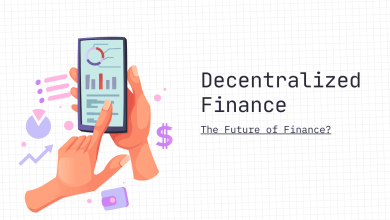
- Knowledge is power
- The Future Of Possible
- Hibs and Ross County fans on final
- Tip of the day: That man again
- Hibs and Ross County fans on final
- Spieth in danger of missing cut
The term “blockchain layers” refers to the different levels of functionality and technology that make up a blockchain system. While there isn’t a single, universally agreed-upon model for these layers (like the OSI model for networking), understanding the concept helps to break down the complexity of blockchain technology and how different components interact. This article will present a common framework for understanding blockchain layers and discuss the role of each layer.
A Layered Approach to Blockchain
Thinking of blockchain in layers helps to separate concerns and understand how different parts of the system contribute to its overall functionality. We can generally divide blockchain technology into the following layers (note that some models combine or separate these layers differently):
- Layer 0: The Foundation (Infrastructure)
- What it is: This layer provides the underlying infrastructure that enables the blockchain to operate. It’s not part of the blockchain itself, but rather the foundation upon which it’s built.
- Components:
- Internet Connectivity: The internet provides the communication network for blockchain nodes.
- Hardware: This includes the physical computers (nodes), servers, and networking equipment that run the blockchain software.
- Operating Systems: The operating systems on which the blockchain software runs.
- Role: Provides the physical and network infrastructure for the blockchain to exist.
- Layer 1: The Data Layer (Blockchain)
- What it is: This is the core blockchain itself – the distributed ledger that records all transactions. It defines the fundamental data structures and rules of the blockchain.
- Components:
- Blocks: Containers of data (transactions, timestamps, etc.).
- Chains: The chronological sequence of linked blocks.
- Cryptography: Hashing, digital signatures, and other cryptographic techniques that secure the blockchain.
- Data Structures: Merkle trees, Patricia trees, and other data structures used to organize and manage data efficiently.
- Consensus Mechanism: The rules for reaching agreement on the state of the blockchain (e.g., Proof-of-Work, Proof-of-Stake).
- Role: Defines how data is stored, validated, and secured on the blockchain. Examples: Bitcoin, Ethereum (pre-Merge, the consensus mechanism part), Litecoin.
- Layer 2: The Network Layer (Scaling Solutions)
- What it is: This layer consists of protocols and technologies built on top of Layer 1 to improve scalability, speed, and efficiency. Layer 2 solutions process transactions off-chain (off the main blockchain) and then periodically settle them on Layer 1.
- Components:
- Payment Channels: Allow for fast, low-cost, off-chain transactions between two parties (e.g., Lightning Network for Bitcoin, Raiden Network for Ethereum).
- State Channels: Generalize payment channels to allow for off-chain execution of smart contracts.
- Sidechains: Separate blockchains that are connected to the main blockchain (Layer 1) and can process transactions independently.
- Rollups (Optimistic and ZK-Rollups): Bundle multiple transactions together and process them off-chain, then submit a proof of validity to Layer 1.
- Plasma: Creates “child chains” that periodically report back to the main chain.
- Role: Enhances the scalability and performance of the blockchain without compromising the security of Layer 1. Examples: Lightning Network, Polygon, Arbitrum, Optimism.
- Layer 3: The Application Layer (dApps)
- What it is: This is the layer where decentralized applications (dApps) are built. These applications leverage the underlying blockchain infrastructure (Layers 1 and 2) to provide various services and functionalities.
- Components:
- Smart Contracts: Self-executing contracts that automate processes on the blockchain.
- User Interfaces: The front-end interfaces that users interact with to access dApps.
- APIs: Interfaces that allow dApps to communicate with the blockchain.
- Decentralized Storage: (Often considered part of Layer 0 or a separate layer altogether) dApps may use decentralized storage solutions (like IPFS or Filecoin) to store data.
- Role: Provides the user-facing applications and services that utilize the blockchain. Examples: Uniswap, Aave, CryptoKitties, Decentraland.
- Layer 4: Application Enablement Layer
- What it is: Provides the interface that makes it easier for developers to interact with and build upon the blockchain.
- Components:
- Wallets
- SDKs.
- APIs.
- User Interface
Why is Understanding Blockchain Layers Important?
- Conceptual Clarity: It helps to break down the complex technology into more manageable parts.
- Problem Solving: It allows us to identify and address specific challenges at each layer (e.g., scalability issues at Layer 1 can be addressed with Layer 2 solutions).
- Innovation: It fosters innovation by allowing developers to focus on specific layers without needing to build an entire blockchain from scratch. For example, developers can build dApps on Layer 3 without needing to create their own Layer 1 blockchain.
- Investment Decisions: It helps investors understand the different roles and value propositions of various blockchain projects.
The Interconnectedness of Layers
It’s crucial to understand that these layers are interconnected and interdependent. Layer 2 solutions rely on the security of Layer 1. dApps (Layer 3) rely on the functionality of both Layer 1 and Layer 2. The entire system functions as a cohesive whole.
Conclusion: A Multi-Layered Approach to Decentralization
The concept of blockchain layers provides a valuable framework for understanding the architecture of blockchain systems. By dividing the technology into distinct layers, we can better grasp the complexities, identify areas for improvement, and appreciate the innovative solutions being developed at each level. This layered approach is crucial for the continued growth, scalability, and adoption of blockchain technology.





